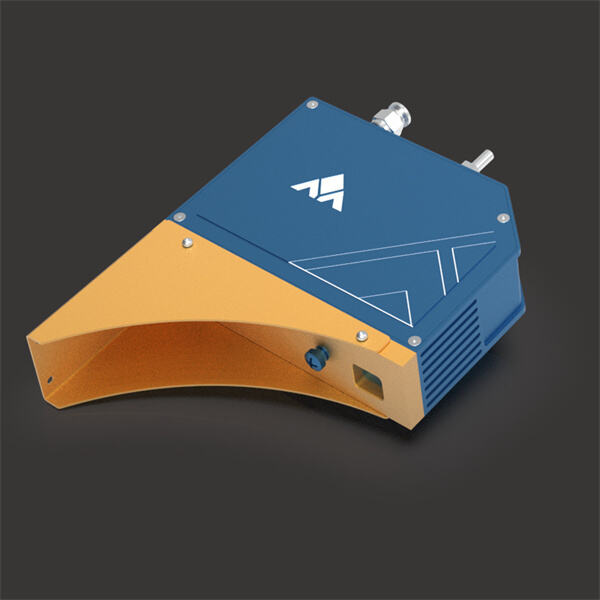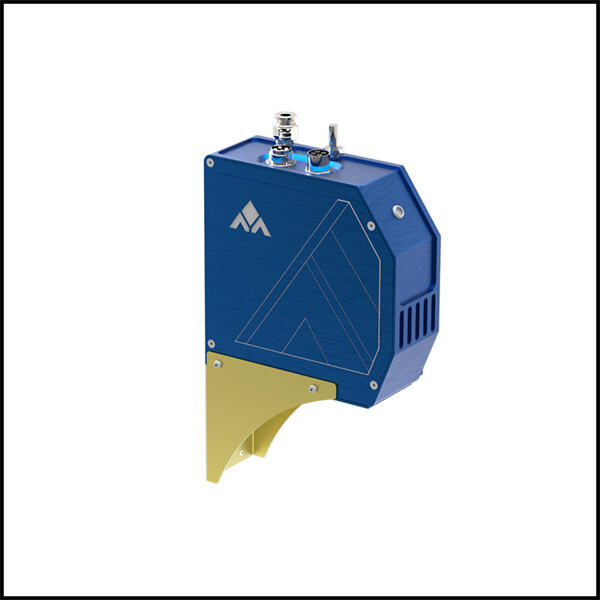In many ways, robots are like superheroes. They can lift heavy things and go into places too dangerous for people, and do so smartly. But how do robots know what to do? How do you perceive the world around you and make educated decisions? This is where sensors and vision systems play a critical role, as they provide insights into the robot's environment.
Robots rely heavily on sensors such as high speed laser sensor. They function as the eyes and ears of a robot. Sensors, which are devices like us that can detect movement, light, sound, temperature and distance. They gather data from the surrounding environment and send it to the computer, which is the robot's brain. This information allows the robot to be aware of it is surroundings. For instance, it knows when there is an obstacle ahead of it or when it needs to pick up a toy. Sensors help robots understand their environment which is crucial for their safe and effective operation.
Vision is one of the most crucial senses for robots. Just like humans have eyes to see all around them, robots have a special technology called vision systems to "see" their environment. Vision systems are defined as a system of cameras and sensors that photographs and videos images in their vicinity. This teaches artificially intelligent robots to identify different objects such as a ball or a toy, and navigate in a room without colliding with an object. For example, in a living room, the vision system of such robot helps it locate the position of furniture to enable them to move freely without crashing into the couch or the table.

Picture the cleaner-bot tasked with tidying up a cluttered space. It has to know where the toys are, where the furniture is, and where to go to pick up the toys. The industrial laser sensor are key features of the robot it helps the robot to gather essential information about the room. They assist it in knowing the location of every toy and how to steer clear of any roadblocks. When the robot collects this information, it is transmitted to the brain of the robot. It then uses this information to determine the best way to clean the room. the robot can compute the quickest way to pick up all the toys and return a reorganized room without dawdling or crashing into things.

The majority of ai robot rely heavily on vision systems to enable them to identify items and traverse various places. Imagine a robot that works at a warehouse, for example. It should be able to look at and recognize various boxes and packages. This enables it to pick them up and take them to the right place. Vision systems let the robot "see" and identify the boxes for it to stack them correctly and quickly. Without vision systems, robots would have no idea what to pick up, or where to go, making their jobs a lot more complicated.

Sensors and vision systems are becoming more advanced and sophisticated with improvements in technology. It allows robots to learn, and perform tasks that may be more advanced. Today’s robots, for instance, can recognize human faces and emotions, such as whether someone’s smiling or frowning. This is giving them the power to communicate with human in a more friendlier way. We think of the possibility of a robot that can tell whether you are happy and act accordingly. This not only turns robots into tools but also into helpful companions who can cooperate with us.
Fast, accurate, completely No-Programming, high efficiency and high precision. It solves the complicated teaching process of traditional robots and saves the downtime of teaching process.
Adopting the function of finding and tracking, scanning the weld seam, confirming the position and information of the weld seam, correcting the position of the weld seam between the 3D digital model drawing and the actual workpiece, and solving the problem of bias weld due to the error of incoming materials and thermal deformation.
Provide powerful welding robot front loading, side loading, inverted loading, gantry mounting, intelligent trajectory planning for multiple robots, multiple external axes, and positioner for cooperative work. Realize robot motion simulation, collision detection, singularity avoidance and axis limit detection.
Beijing Minyue Technology Co.,LTD,as the world's leading high-tech enterprise of non-teaching intelligent application of industrial robots.We specialize in flexible intelligent manufacturing with our self-developed RobotSmart - Intelligent Decision Making System, SmartVision - Binocular Structured Light Vision System, and SmartEye - Laser Vsion Seam Tracking System. Provide a new generation of intelligent robot welding and cutting solutions.